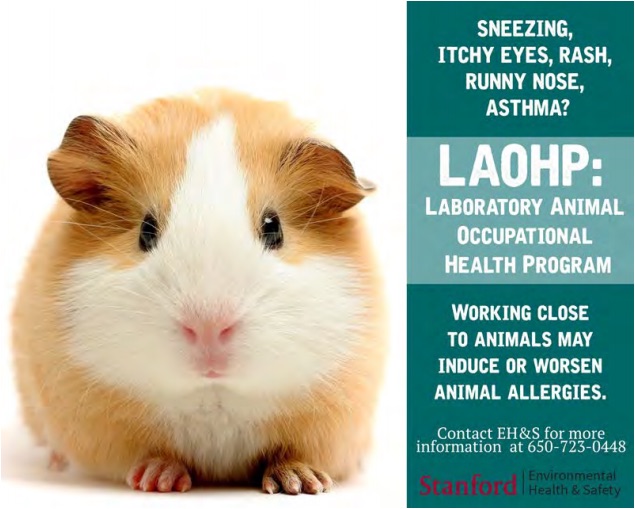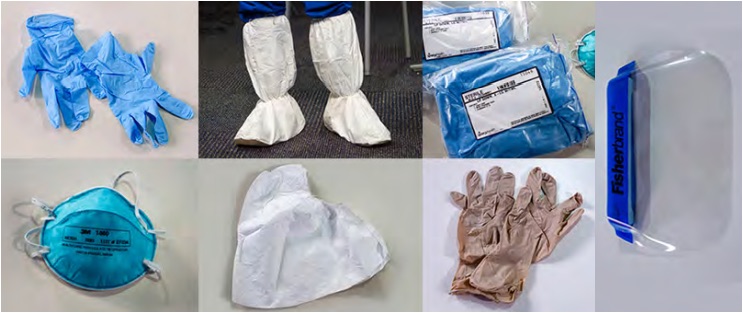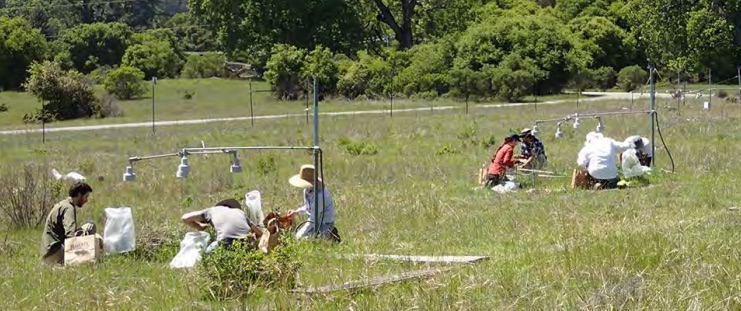Enrollment in the LAOHP is available to all faculty, staff, students and visiting scholars who work directly with vertebrate animals, unfixed animal tissues or body fluids, and those who work in animal housing areas. This program is authorized by federal regulations and Stanford’s external accrediting agency. The primary goals of the LAOHP are to:
- Protect individuals from work-related risks associated with exposure to animals through a program of species-specific health information, education, and risk-based medical evaluation,
- Protect the health of research animals from certain transmissible diseases,
- Be pertinent to the species with which individuals are exposed and the work they perform,
- Be minimally intrusive, and
- Be cost-effective

Working close to animals may induce or worsen animal allergies.
University policy requires that all faculty, staff, students, and visiting scholars who work directly with vertebrate animals, unfixed animal tissues
or body fluids, and those who work in animal housing areas be informed of the risks and the LAOHP, but the level of participation is based on risk categorization. APLAC determines the risk category for research and teaching individuals during protocol review process; this sometimes is done in conjunction with recommendations from SUOHC or Biosafety. Continuing authorization to use animals is contingent upon the potential requirements to participate in the program. For information on how to enroll, please see the LAOHP page (https://bit.ly/2CNFrj4) on the Environmental Health & Safety (EH&S) web site.
Risk Category 1
The Stanford Risk Category 1 (RC1) group classification consists of personnel whose procedural, protocol, or job function risk analysis has indicated the need for enhanced medical review or in-person evaluation in the Occupational Health Center. This group is considered higher risk and includes, but is not limited to, Veterinary Service Center (VSC) personnel, Animal Care staff, and researchers requiring serological testing for non- human primate (tuberculosis/rubeola) or ungulate (coxiella) surveillance (Table 1). Researchers working with other hoofed mammals (e.g., swine, goats, cows), wild rodents, and field studies may also be required to enroll. The specific risk factors are variable and dependent upon specific uses and handling identified in the animal care and use protocol application. All individuals in RC1 groups are required to complete and submit the LAOHP Health Questionnaire prior to the APLAC approval of an individual to work on a related protocol or assignment. Each questionnaire will be evaluated by a SUOHC clinician to determine the level of potential exposure and whether further steps are necessary. Specific medical surveillance can also be requested by EH&S and/or the SUOHC for any individual, based upon identified risk factors.
Table 1. Animals in Risk Category 1 v Risk Category 2
| Risk Category 1 | Risk Category 2 |
|---|---|
| Non-Human Primates | Dogs |
| Sheep (Female/Neonatal) | Rabbits |
| Pigs | Rodents (Domestic/Captive) |
| Goats | Sheep (Male) |
| Bats | Marine Mammals |
| Birds | Fish/Amphibians/Reptiles |
| Wild Animals Or Animal Field Studies |
Risk Category 2
Risk Category 2 (RC2) is for all individuals involved in animal care and use protocols that do not fall within the RC1 participation group. All individuals in the RC2 group are provided with information, educational materials and periodic updates on potential health and safety issues associated with the particular animal species or research material with which they work, including animal allergies. These individuals are strongly encouraged to complete and submit the LAOHP Health Questionnaire, but this questionnaire is optional for members of the RC2 participation group.
Allergies to Laboratory Animals (ALA)
In the United States, an estimated 40 to 50 million people currently suffer from allergies. Hypersensitivity to household pets is a common problem in the population as a whole, and in the research setting, allergies to laboratory animals (ALA) can become a serious concern. Among those whose education or occupation requires significant exposure to lab animals, ALA affects approximately one in five people. Rats and rabbits are the most frequently implicated species, but mouse allergies are becoming more apparent, especially as the numbers of mice utilized increases and the research projects using them require
more direct handling. Cat and dog allergies may also be occupational if a research project includes those species, and it is possible to develop allergic reactions to most other species, including hamsters and ferrets, after chronic exposure.
Although it is true that people with very limited contact develop fewer problems, studies have shown that the problem of ALA can be just as severe in those handling animals for scientific purposes (research staff) as it is in those responsible for their primary care (caretaking staff). A history of previous allergies (i.e. atopy) is not a guarantee that animal- related problems will develop, but some studies have found a correlation between pre-existing atopy and ALA. The symptoms are generally evident six to 24 months after exposure but sometimes may take years to develop, and often worsen over time. Mild symptoms of ALA involve the eyes and nose (e.g. sneezing, runny nose, watery eyes) and/or the skin (itchy welts or rashes) (Figure 3). Non-ALA allergies such as hay fever or an associated occupational allergy like latex hypersensitivity may cause ALA symptoms to worsen. These minor problems typically will not go away if the exposure to animal allergens does not change, and can ultimately progress to the most serious manifestation of ALA, which is animal-related asthma. Asthma is a serious, potentially debilitating problem, and it will predictably affect a percentage of workers who ignore the earlier symptoms of rhinitis or conjunctivitis (runny eyes and nose). Asthma is estimated to affect two percent of all people using animals during their first year of exposure, and an additional two percent per year thereafter.
ALA can have serious consequences for affected personnel, not just in terms of personal health, but in determining future career options as well. Studies have shown that about 50% of those with symptoms will eventually stop working with animals because of the discomfort involved with ALA. Many of those people can change career tracks or be reassigned to non-animal duties within the same institution, but as many as 15% of affected workers will eventually quit their jobs because of ALA. Manifestations of asthma may not completely subside until six or more months after ending contact with animals. It was previously thought that dog and cat allergies were provoked by dander or fur, but it is now known that the actual allergens are proteins in the saliva, which are present on the animals’ skin and hair. In the case of ALA involving rodents, the major allergens are low-molecular weight proteins excreted in the urine, which adhere to skin and hair. They can also be found in soiled bedding, and may be distributed as airborne contamination in rooms where animals are housed or manipulated.

There are three general approaches to allergy treatment:
- avoiding the allergen through environmental control
- medication to relieve symptoms
- immunologic desensitization (allergy shots)
Medications can provide relief, but the following should be kept in mind:
- Although there are over-the-counter drugs which can give temporary symptomatic relief, it is best to seek the advice of a physician before self-prescribing. Drugs can mask the warning signs of developing asthma and may also cause drowsiness.
- If you use an antihistamine, take the drug prior to exposure for best results.
- Other types of anti-allergy drugs that do not induce drowsiness are now available by prescription, if necessary. Standard allergy shots (immuno-therapy) to reduce allergic sensitivity to cats and dogs have improved in recent years, and may be a good choice for some people.
Allergen avoidance is the only complete solution to ALA. If avoidance is impossible, it’s critical that exposure is minimized as much as possible. Many people with ALA are able to continue working with animals by taking some simple precautions, such as the following:
- Wear personal protective equipment, including a tight-fitting mask, gloves, and a long-sleeved lab coat (or other dedicated uniform) at all times when working with animals. In some cases, a respirator or a filtered air-supplied face mask may be warranted (Figure 4).
- Take advantage of filter-topped caging (if available in the facility) to contain allergens when animals are transported or held. An understanding of the proper use of ventilated workstations will help minimize aerosol exposure when cages are opened.
- Avoid unnecessary exposure to irritants such as dust, tobacco smoke, and air pollution, since irritant chemicals can worsen airborne allergy symptoms.
- If you are experiencing symptoms of ALA, specialized medical professionals are available to help evaluate and treat your problems.

Procedures to minimize allergen contact (such as those listed above) should be followed by all exposed persons, even if ALA symptoms are not present, as these may prevent the development of clinical signs. At the very least, following these procedures may greatly slow the progression of ALA. Current federal guidelines require that all personnel beginning to work with animals be given information regarding ALA and the precautions that should be taken. ALA should be treated like any other occupational health hazard and personnel should notify their supervisors or SUOHC of known or potential work-related allergies. Clear procedures should be established in each facility for reporting all allergic reactions in the same way that accidents, bites, and scratches are reported.
Enrollment in LAOHP allows SUOHC physicians to help workers track allergy status and provide advice for minimizing or treating allergies. Although enrollment for RC2 is not required, it is highly recommended for all personnel who work with or in proximity to animals on an intermittent or regular basis.
